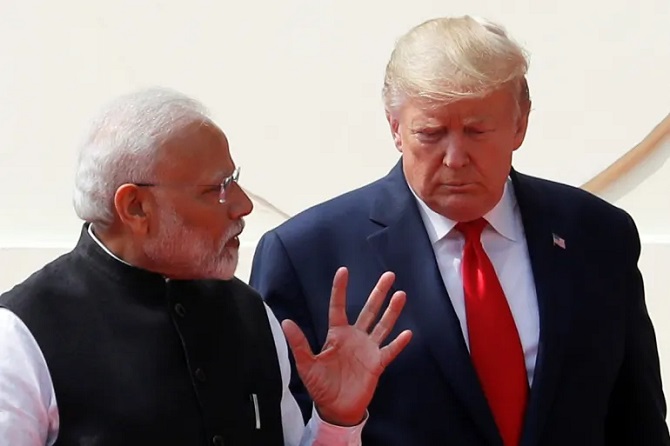President Donald Trump has escalated trade tensions with India, announcing a surprise 50% total tariff on Indian goods entering the United States—doubling the existing duty—citing India’s continued imports of Russian oil as a threat to U.S. national security.
The executive order, released Wednesday, imposes an additional 25% levy, on top of the current 25% tariff first imposed under Trump’s earlier trade realignment agenda. The action has sent shockwaves through the retail and apparel sectors, where India plays a major sourcing role for everything from textiles to jewelry.
The United States imposes import duties ranging from 7% to 16.5% on different categories of garments, depending on their specific HSN codes. With the newly imposed additional 50% tariff, the total duty on Indian-made garments now ranges between 57% and 66.5%.
The move is aimed squarely at India’s energy policy. Despite global sanctions, India remains one of the largest buyers of Russian crude—a relationship Washington now equates with indirect support of Moscow’s military campaign in Ukraine.
“The Government of India is currently directly or indirectly importing Russian Federation oil,” Trump wrote in the order. “These imports contribute to a threat to U.S. national security.”
The new tariffs are set to take effect in 21 days, giving stakeholders limited time to prepare or lobby for exemptions. During these 21 days, India and the U.S. can attempt to renegotiate terms, possibly reducing the tariff or securing sector-specific exemptions.
The administration left open the option to “modify” the order if India “takes significant steps” to align with U.S. policy, including reducing Russian oil imports. Trade experts and U.S. business groups are pushing for dialogue behind the scenes. However, if no deal is struck by the end of the 21-day period, the full 50% tariff is scheduled to go into effect.
Retail & Sourcing Industry Braces for Fallout
India is the second-largest supplier of apparel and textiles to the U.S. after China. The new 50% import duty is expected to hammer key product categories like cotton garments, home textiles, leather goods, and precious stones—sectors that already operate on thin margins.
“Any sourcing executive will tell you—this is massive,” said an apparel import manager at a major U.S. department store, speaking anonymously. “Factories in Tiruppur and Surat are already calling us. They don’t know how this will play out.”
According to the U.S. International Trade Commission, India exported $9.8 billion worth of apparel and textile goods to the U.S. in 2024. Trade groups including the American Apparel & Footwear Association (AAFA) and the National Retail Federation (NRF) have already raised concerns, warning of possible price hikes and delayed shipments ahead of the 2025 holiday season.
Political Repercussions & Diplomatic Whiplash
India’s response was swift. Officials condemned the move as “extremely unfortunate” and accused Washington of a double standard, as the EU and other U.S. allies continue to import Russian gas without similar penalties.
Behind the scenes, the geopolitical calculus is shifting. Indian Prime Minister Narendra Modi is reportedly planning a diplomatic trip to China and Russia later this month, signaling potential realignments in the Indo-Pacific trade matrix.
Also Read: Trump warns of 20-25% tariffs on Indian imports amid trade talks
Trade insiders are also closely watching for retaliatory tariffs or restrictions on U.S. goods entering India—particularly American electronics, agriculture, and defense equipment.
What Happens Next?
With the 21-day implementation window, there remains a small opportunity for negotiated reprieve. Industry groups are lobbying USTR and the Commerce Department for product-specific carve-outs, particularly for essential goods and supply-critical SKUs.
However, the Trump administration is under mounting pressure to show results on both trade enforcement and Russia containment, limiting its flexibility.
If fully enforced, the tariffs could:
- Trigger a supply shift to Vietnam, Bangladesh, and Mexico
- Widen the U.S.-India trade deficit
- Complicate ongoing U.S. diplomatic efforts in the Indo-Pacific
Trump has warned that other importers of Russian oil—including countries like Turkey, Indonesia, and even Germany—could face similar punitive trade actions.
“This isn’t just about oil—it’s about leverage,” said one Washington trade consultant. “India’s strategic autonomy has always been a thorn in Trump’s geopolitical vision.”
“With no exemptions announced yet, sourcing teams are preparing for the worst.”
This means the tariff will only take effect 21 days after the announcement, which was made on August 6, 2025.











